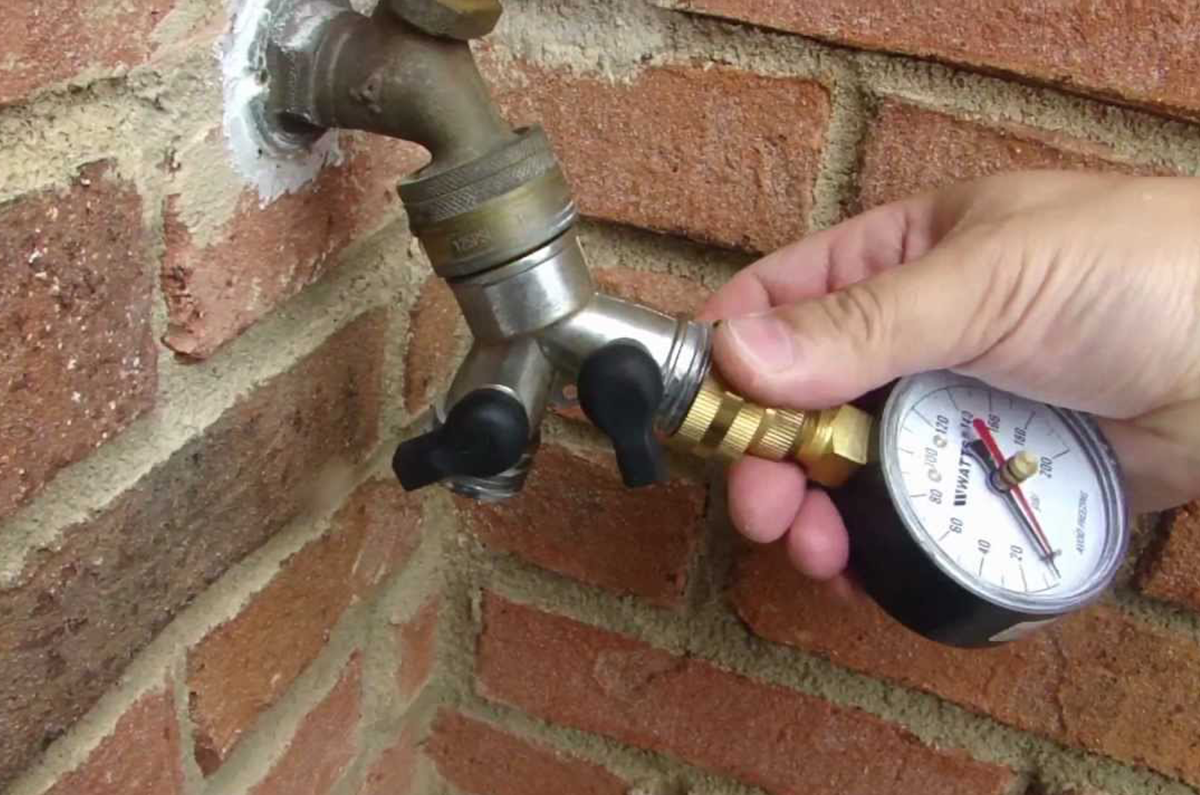Proven Tactics for Resolving Low Water Pressure in Your Home
Proven Tactics for Resolving Low Water Pressure in Your Home
Blog Article
This great article below involving 4 Ways to Troubleshoot Low Water Pressure is truly enjoyable. Check it out yourself and figure out what you think about it.

Low water pressure in your house can be an aggravating trouble, influencing everything from bathing to cleaning dishes. If you're experiencing weak water circulation, there are several feasible causes and services to explore. In this overview, we'll go over common factors for low tide pressure and practical steps to deal with the problem efficiently.
Introduction to Low Water Pressure
Low tide pressure happens when the flow of water from your faucets, showers, and other fixtures is weak than normal. This can make day-to-day tasks much more tough and much less efficient. Recognizing the reasons for low water stress is crucial to discovering the best service.
Typical Reasons For Low Water Stress
Pipe Obstructions
In time, pipelines can come to be obstructed with mineral deposits, sediment, or particles, limiting the circulation of water. This is an usual issue in older homes with galvanized steel pipelines.
Deterioration
Rust within pipes can cause leakages and minimized water stress. Corrosion build-up can constrict water flow, specifically in maturing plumbing systems.
Faulty Pressure Regulators
Stress regulatory authorities are accountable for preserving constant water pressure in your home. If they malfunction, it can result in low tide stress or uneven circulation throughout your home.
Community Water System Issues
Sometimes, the trouble exists outside your home. Municipal water concerns, such as main line leakages or upkeep work, can briefly lower water pressure in your area.
Just How to Identify Low Water Stress
Checking Faucets and Fixtures
Start by testing the water stress at various taps and fixtures throughout your home. If the problem is separated to particular locations, it might indicate local troubles.
Checking Pipelines
Examine noticeable pipes for indications of leaks, rust, or clogs. Take note of any uncommon noises, such as knocking or rattling pipes, which could show problems within the plumbing system.
Consulting with a Plumber
If you're not able to identify the source of low tide pressure, think about hiring a professional plumber to conduct a complete examination. They can recognize underlying issues and recommend appropriate services.
DIY Solutions to Deal With Low Tide Stress
Cleaning Up Aerators and Showerheads
Natural resources can accumulate in aerators and showerheads, minimizing water circulation. Get rid of and clean up these elements regularly to improve water stress.
Flushing Hot Water Heater
Sediment build-up in the water heater can restrict circulation and minimize effectiveness. Flushing the storage tank periodically assists remove sediment and maintain ideal performance.
Checking Stress Regulator
Make certain that the pressure regulator is functioning correctly. Changing or changing the regulator can help recover proper water pressure throughout your home.
Cleaning Clogs in Pipes
For small obstructions, attempt using a plumbing serpent or chemical drain cleaner to clear obstructions in pipelines. Beware when using chemicals and follow safety and security guidelines.
When to Call a Professional Plumber
If do it yourself efforts stop working to settle the issue or if you think considerable plumbing troubles, it's finest to seek assistance from a licensed plumber. They have the knowledge and tools to address complicated issues safely and properly.
Safety Nets to Preserve Water Stress
Normal Maintenance
Arrange regular maintenance for your plumbing system to stop concerns such as rust, leaks, and obstructions. Attending to small problems early can aid avoid even more considerable repairs later on.
Mounting a Stress Booster
Consider installing a stress booster pump to enhance water pressure in locations with constantly reduced flow. This can be particularly beneficial for multi-story homes or properties with high-demand fixtures.
Surveillance Water Use
Be mindful of water usage behaviors and prevent overtaxing the plumbing system. Straightforward adjustments, such as shocking showers and laundry lots, can help keep sufficient water stress.
Conclusion
Managing low tide stress can be irritating, yet identifying the underlying causes and implementing appropriate options can recover optimum flow throughout your home. Whether it's cleaning aerators, checking pipelines, or speaking with a plumber, taking positive actions can make certain a constant supply of water for your everyday demands.
FOUR WAYS TO FIX LOW WATER PRESSURE NOW
Turning on a shower or faucet only to find the water comes out in a sad, slow drizzle is never a good feeling. How exactly are you supposed to wash a pan or take a quick shower when it takes 10 minutes just to rinse off a little soap? The good news is that when your water pressure is bad, there's always a cause: typically one that can be easily fixed. Here are some of the most common causes of low pressure and what you can do to fix the issue:
DEBRIS AND MINERAL DEPOSIT BUILDUPS
If you notice low water pressure from just one or two of the fixtures in your house, the problem likely has to do with debris buildup. Water is full of minerals and other debris, all of which can accumulate in your pipes and on your fixtures. This can cause a blockage that affects how much water flows through. To fix this, try filling a small plastic bag with white vinegar, and use a rubber band to hang it around your showerhead or faucet. Let the head of the fixture soak for a few hours, and the vinegar should loosen the deposits.
WATER LEAKS
Leaks are another common cause of low water pressure. If water is flowing out of your plumbing through a hole or crack before it can reach your fixture, the pressure coming out of the faucet or showerhead will be lower. A plumbing professional is your best bet for finding and repairing a leak in your water supply pipes.
Leaks are another common cause of low water pressure. If water is flowing out of your plumbing through a hole or crack before it can reach your fixture, the pressure coming out of the faucet or showerhead will be lower. A plumbing professional is your best bet for finding and repairing a leak in your water supply pipes.
FOUR WAYS TO FIX LOW WATER PRESSURE NOW
Turning on a shower or faucet only to find the water comes out in a sad, slow drizzle is never a good feeling. How exactly are you supposed to wash a pan or take a quick shower when it takes 10 minutes just to rinse off a little soap? The good news is that when your water pressure is bad, there's always a cause: typically one that can be easily fixed. Here are some of the most common causes of low pressure and what you can do to fix the issue:
DEBRIS AND MINERAL DEPOSIT BUILDUPS
If you notice low water pressure from just one or two of the fixtures in your house, the problem likely has to do with debris buildup. Water is full of minerals and other debris, all of which can accumulate in your pipes and on your fixtures. This can cause a blockage that affects how much water flows through. To fix this, try filling a small plastic bag with white vinegar, and use a rubber band to hang it around your showerhead or faucet. Let the head of the fixture soak for a few hours, and the vinegar should loosen the deposits.
WATER LEAKS
Leaks are another common cause of low water pressure. If water is flowing out of your plumbing through a hole or crack before it can reach your fixture, the pressure coming out of the faucet or showerhead will be lower. A plumbing professional is your best bet for finding and repairing a leak in your water supply pipes.
Leaks are another common cause of low water pressure. If water is flowing out of your plumbing through a hole or crack before it can reach your fixture, the pressure coming out of the faucet or showerhead will be lower. A plumbing professional is your best bet for finding and repairing a leak in your water supply pipes.
A VALVE ISSUE
If you have low water pressure throughout your home, check your main shut-off valve to make sure it's completely open. You may also want to see if there's a pressure-reducing valve installed. If there is, have a plumber help you adjust the settings to get the pressure you're looking for.
OTHERS USING WATER
Believe it or not, your low water pressure could be caused by your neighbors. If you notice low pressure at certain times of day, it may be because you and the people living next to you have similar schedules - when everyone is showering at the same time, the pressure will be lower in every home. Low pressure throughout the neighborhood may also be caused by an issue with your municipal water supply. If that's the case, call the supplier to see if they're working on the issue.
https://www.rotorooter.com/blog/water-leaking/low-water-pressure-fixes/

As a passionate reader on Low Water Pressure in the House?, I assumed sharing that post was a good idea. Those who appreciated our article please don't forget to share it. Thanks so much for taking the time to read it.
Visit Website Report this page